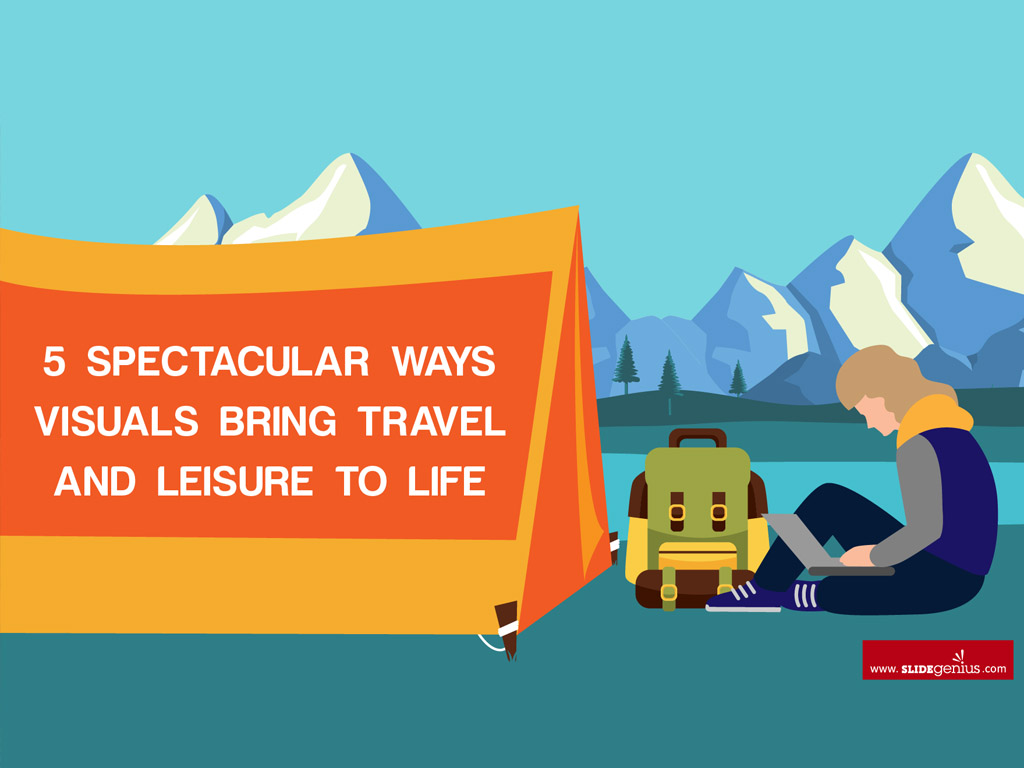Chances are you’re into travel and leisure activities. If you are, then you most likely have a trove of travel blogs bookmarked in your browser, ready for your viewing pleasure anytime and every time they are updated. You may even backread just because you find a few posts so awesome. You smile and tell yourself, “I’ll go there and experience that one day.”
Even when not outdoors, leisure articles also do a wonderful job of making you want to go to whichever place is featured. Restaurants, hotels, and even parks and houses look so majestic and worth our time and money that you just want to stay there.
Both types of write-ups practice heavy use of images to convey their message. This interesting approach takes advantage of both words and pictures (even videos) to highlight specific amenities people can enjoy. Since the brain processes visuals sixty thousand times faster than text, captivating the eyes resonates better with readers and makes them remember that post more.
Make your posts work for you by using the same technique of visual thinking. Here’s how.

1. Showing the wonder
One crucial thing to do with travel and leisure posts is to show what makes that place marvelous. Pictures can do that in a way that words can’t – instantly. One look at a picture and you know you’re in for a good ride. There’s a sense of wonder that makes you unable to forget that place.
Take panoramic shots or videos to show as much of the place. The more you display where you are, the more you can entice readers to visit that place because you’re already giving them a sneak peek of what they can see, feel, and experience.
It’s like a trailer for a movie. If your post is good, you hype the place up and your readers as well. Creating that buzz stirs their emotions and plants the idea of going in their heads. All you need is a killer call to action, and they’re hooked.
You can even go one step further and use cobrowsing to help customers browse through trip options. Show them pictures of their dream vacation, complete with a great itinerary, and you will hook them instantly.

2. Sparking inspiration
This point is closely related to point number one. When your readers see something—a place, in this instance—that is larger than life, perhaps a wonder of nature or a grand manmade structure, they feel inspired. It’s like they already have a voice inside of their heads, telling them, “Go there!”
You may be showing them a preview picture or a full-blown, no-holds-barred vlog. Whatever tickles their fancy. And their fancy is what you really want to tickle because, ultimately, this will influence their choice to make their dreams come true. Influence it as much as you can.
It’s your task to spark their interest and inspiration. Give your readers something to fantasize about. Keep them on their toes and leave them with an anticipation that they can’t wait to fulfill and satisfy.

3. Soliciting a response
Even if your readers are not travelers at heart, showing the wonder will not fall on blind eyes and dry emotions. Even if they can’t go to whatever place you’re featuring, you can still stir their feelings with the beauty of nature or the extravagance of luxury.
Humanize locations with pictures of happy natives, stun your audience with breathtaking views, or make them salivate at the amazing food available in the location of their dreams. When they see your post, they may comment on how great it is or how gorgeous the pictures are or how sweet the place is. That’s only a small part of this point.
When you provide the inspiration for their visit is better. They may thank you for giving them the idea and location. That gratitude, while not exactly what you should be gunning for when posting, will be more than enough to keep you traveling, writing, and taking pictures.
And the cycle starts again.

4. Satisfying curiosity
We’ve dealt with the where and the what. Now, let’s make them think of the why.
The question in anyone’s mind when it comes to traveling is, “Why should I go there?” And there are as many answers as the people in the world. It’s a personal thing. Your answer will be different from the readers’. There will be similarities, but only to a certain extent.
That’s perfectly fine. Let them answer that one because, at the end of the day, it’s their trip and their experience. The best you can do, apart from everything above, is make them see that taking the effort to go to that place will be a magical experience.
Pose the question and give them an insight about what your answer is. It doesn’t matter if they already have one or if they will find one there. What matters is that they are satisfied. And it will all be thanks to you and your influence.

5. Sharing an experience
Does the place your showing pictures of have amenities that can only be found there? How much of an adrenaline rush can a visitor experience?
Be it zip lining or horseback riding, show what can be done in the place you’re featuring. If possible, show yourself doing as many of those activities as you can. There’s a sense of action in those kinds of images that excites readers. When they see it, they will want to do it too—a mix of envy and exhilaration that gets people off their couches.
Even if it’s not a dynamic adventure they want but rather a quiet staycation, tell and show them your experience. There are people who want activities that make the heart race, and there are some who prefer a relaxing vacation. Regardless of preference, not holding back on your memorable experience not only gives the place a good review but also an incentive for your readers to try things out.
Travel and leisure – it’s time to inspire!
To sum everything up, visuals can do something that words are also capable of doing, except the former is much faster: tell a story. Although not a modern invention—it’s said to be as old as cave paintings—the widespread fame of visual storytelling today thanks the Internet because of how easy it is to access anything.
Of course, all of these will be for nothing if you don’t suitably deliver what you’re saying. Nothing’s worse than disappointed travelers because what they saw and/or experienced fell flat of their expectations. They already invested time, money, and effort going to the place you wrote about. Make that trip worth their while.
Ready to learn more about how you can grow customer experience with live visual engagement? Download the free ebook Counting the Customer: The Complete Guide to Dynamite Customer Care.

About Rick Enrico
Rick Enrico is the CEO and Founder of SlideGenius, Inc. He regularly publishes expert presentation tips on the SlideGenius blog. You can connect with him on LinkedIn and Twitter.
About Glance Networks
Glance helps enterprise organizations create the ultimate customer experience with smart, omni-channel visual engagement solutions based around integrated cobrowse, screen share, and one-way agent video. We are one of the world’s simplest, most reliable and secure platforms that enable companies to see, show and share anything online, creating a frictionless path to great experiences in sales, support and customer service. The result is improved customer satisfaction and loyalty, increased revenue growth and operational savings. From financial services and healthcare to retail and travel and leisure, even the most advanced technology and SaaS organizations – we transform the customer experience for today’s business. Learn More »
Resources
Kusinitz, Sam. “12 Reasons to Integrate Visual Content Into Your Marketing Campaigns [Infographic].” Hubspot. July 18, 2014. blog.hubspot.com/marketing/visual-content-marketing-infographic#sm.001ufvfqg1422f5wt3y21mja2b6pv
Oneale, Alexandra. “How Visuals Attract Customers Throughout the 5 Stages of Travel.” ICE Portal, inc. September 3, 2014. web.iceportal.com/how-visuals-attract-consumers-throughout-the-5-stages-of-travel
Sharma, Devvya. “Why do people travel?” LinkedIn Pulse. October 14, 2015. www.linkedin.com/pulse/why-do-people-travel-devvya-sharma
Waxman, Martin. “Visual Storytelling Through the Years.” Cision. March 27, 2015. www.cision.ca/best-practices/visual-storytelling-through-the-years
Wilner, Joe. “The Top 10 Positive Emotions.” Psych Central. March 2011. blogs.psychcentral.com/positive-psychology/2011/03/the-top-10-positive-emotions
SaveSave
SaveSave
SaveSave



